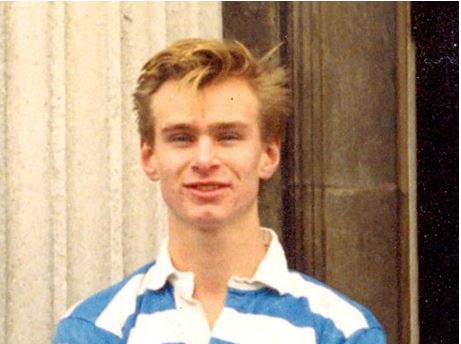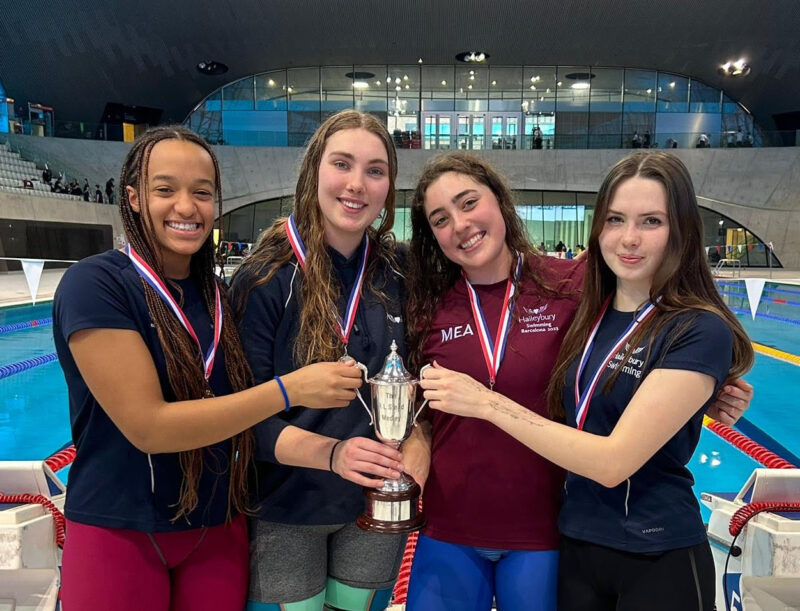This website uses cookies so that we can provide you with the best user experience possible. Cookie information is stored in your browser and performs functions such as recognising you when you return to our website and helping our team to understand which sections of the website you find most interesting and useful.
Master's speech on Speech Day 2004
My Lord, Chairman, distinguished guests, ladies and gentlemen.
Let me begin by adding my welcome to that of the Chairman and my appreciation that you have again supported this important day, on which we celebrate the achievements of our pupils, in such generous numbers. I am particularly grateful to representatives of the local community who have interrupted their busy schedules to join us. Particularly I welcome Councillor Derek Mayes, Chairman of the East Hertfordshire Council, Councillor Peter Ruffles, Mayor of Hertford, Councillor Phyllis Ballam, Mayor of Ware, and Councillor and Mrs Tranham, Mayor and Mayoress of Broxbourne.
I want you to enjoy today. I know of one family eager to be here since they were kind enough to write, intriguingly, to say that they were looking forward to their seventeenth and last Speech Day! I hope that you will find the many displays of interest. The Art Exhibition and the projects in the Technology Centre are old favourites but each has an additional feature this year. The Art Exhibition includes the Christmas card designed by Daniel Duckworth who joined the Removes this year which was selected as runner-up in the MCC’s Annual Christmas Card Competition. In the Technology display you will see an innovative solution to the problem closing a car door causes the disabled, designed and produced by four Sixth Formers as part of their involvement in the Engineering Education Scheme.
The Archive exhibition is a hardy annual too but I commend it to your attention nevertheless. This exhibition will be the last mounted by the Archive Assistant, Mrs Margaret Ball, who retires with our gratitude later this year. The jazz musicians perform for the umpteenth time in the Cloisters at approximately 2.30pm. This is an excellent opportunity for those who live further away to appreciate the outstanding quality and variety of our music, a pleasure we locals enjoy several times each week thanks to the musicians’ prodigious ambition. Incidentally their latest CD is now available; the sales team will be out in force on Pavilion this afternoon.
In Big School there is a novel display, the collection of photographs submitted for entry for the ‘One Day for Haileybury’ initiative. At the instigation of the Senior Mistress all members of the wider community, including all former pupils, were invited to photograph a scene of particular interest to them anywhere in the world during a twenty four hour period last September. This resulted in a remarkable collection and a fascinating publication which another sales team will no doubt thrust upon you this afternoon. Dining Hall will be open throughout the day too, though I am afraid not for sustenance. If you have time to look in you will see the new servery arrangements and clear evidence of our endeavours to improve further the quality of the food and the efficiency of service. We have not eliminated queues but they undoubtedly arise less frequently and move much more quickly. The system for clearing trays, cutlery and crockery is quicker, cleaner and less visually intrusive and, yes, it is true, portion control is now consigned to history. Having seen the results this term I suspect none of the pupils is in any doubt as to our sincerity in wishing to provide interesting, attractive, healthy food in generous portions three times a day. Serving lunch promptly to about 850 in little more than 45 minutes is quite a task but it is now routinely achieved through substantial investment, careful planning and nimble footwork. Indeed I hope there will be opportunities when parents can join us informally for lunch. We can cope and we would like you to be able to see the new system in operation for yourselves. You may also wish to look over the newly equipped exercise suite upstairs in this building which will be available to the pupils once staff training has been completed.
Those displays are a symbol of a school committed to a broad vision of education. The Chairman has kindly relieved me of the need to mount the usual hopelessly inadequate attempt to summarise it all. I think we now understand each other well enough for it to be clear that my not dwelling on every detail is neither indifference nor ingratitude. For in fact I am regularly thrilled by the way in which our pupils rise to the challenge and often scale heights of which they considered themselves incapable. I am equally, if not even more, grateful to my colleagues for their extraordinary willingness to devote long hours to providing opportunities for the pupils or simply for talking and listening to them, sympathising, encouraging, exhorting or for just being interested and showing it. You, our parents, too support us loyally, and you are pretty tolerant when, as happens from time to time, we fall short of our ideals.
There is little need now to thrust upon you from this platform judgements as to the strength and morale of the school. You will have your own opinions and in many cases they will be at least as well informed and probably a good deal less biased than mine. I should aim to be specific. Examination results are an important index of achievement but not all important. Last year, as many of you will know, 74.5% of the entries at A Level and IB were at the two highest grades, A or B. I have of course converted IB points to A Level grades using the scale that the IB schools are now increasingly persuading the world is fair. That figure rose by fully 20% over the previous two years; we could dream of it doing the same over the next two years but it won’t. In fact, I shall be surprised if this year’s figure is comparable but that achievement shows us what we can do, and what I believe we will do, looking slightly further ahead, by really thorough, interesting and demanding teaching, based on extensive preparation, with generous additional help provided out of hours, regular assessment and reporting and with thorough follow up in the weekly individual tutorial sessions.
High quality teaching alone does not guarantee success. Pupils themselves have an essential part to play in our quest for continued academic achievement. They must be able and willing to concentrate and to undertake the spadework, including learning the vocabulary, the quotations, the essential facts and the formulae and doing plenty of examples. They must not panic and give up at the first sign of difficulty. In an ambitious school, those who will not adopt our outlook after much encouragement should not expect sympathy. That sense of ambition, allied to copious encouragement and a generous vision of what is achievable, is what produced the splendid outcome in 2003. Of course, clever pupils usually do achieve good results and it is true that as the demand for places has risen in recent years the quality of the intake has strengthened but not hugely so. In fact the average Common Entrance mark of the 13-year-old cohort has risen by 4% over the last four years. One could say therefore that the last two years have seen a small increase in input and a large increase in output. That is the pattern we aim to continue.
I am trying to stick to facts, as you will see, having an uncomfortable memory of hearing the audience at one of my early HMC Annual Meetings being gently chided by a Field Marshal, a dying species, and Old Boy of this school, for constantly telling the audience on Speech Day, with barely disguised subtlety and modesty, what a grand year it had been. Grand, or otherwise, it is incontrovertible that in September 1995 there were 583 pupils in the school and in September 2003 the number was 718. In September 1995 when David Pyle became Master i/c the Lower School, succeeding John Rank, he had 23 boys in his charge. A year later the number had declined to 22 and extinction was on the cards. In the three years from 1997 the Lower School quadrupled i




